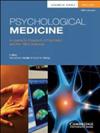Discussing the concept of substance-induced psychosis (SIP)
IF 5.9
2区 医学
Q1 PSYCHIATRY
引用次数: 0
Abstract
Substance-induced psychosis (SIP) is characterized by both substance use and a psychotic state, and it is assumed that the first causes the latter. In ICD-10 the diagnosis is categorized as and grouped together with substance use disorders, and to a large extent also treated as such in the health care system. Though criticism of the diagnostic construct of SIP dates back several decades, numerous large and high-quality studies have been published during the past 5–10 years that substantiate and amplify this critique. The way we understand SIP and even how we name it is of major importance for treatment and it has judicial consequences. It has been demonstrated that substance use alone is not sufficient to cause psychosis, and that other risk factors besides substance use are at play. These are risk factors that are also known to be associated with schizophrenia spectrum disorders. Furthermore, register-based studies from several different countries find that a large proportion, around one in four, of those who are initially diagnosed with an SIP over time are subsequently diagnosed with a schizophrenia spectrum disorder. This scoping review discusses the construct validity of SIP considering recent evidence. We challenge the immanent causal assumption in SIP, and advocate that the condition shares many features with the schizophrenia spectrum disorders. In conclusion, we argue that SIP just as well could be considered a first-episode psychotic disorder in patients with substance use.讨论药物诱发精神病(SIP)的概念
药物诱发精神病(SIP)的特点是同时存在药物使用和精神病状态,并假定前者导致后者。在《国际疾病分类标准》(ICD-10)中,该诊断被归类为药物使用障碍,并与药物使用障碍放在一起,在很大程度上,医疗保健系统也将其作为药物使用障碍来处理。尽管对 SIP 诊断结构的批评可以追溯到几十年前,但过去 5-10 年间发表的大量高质量研究证实并扩大了这一批评。我们如何理解 SIP,甚至如何命名 SIP,对治疗具有重要意义,而且会产生司法后果。事实证明,仅仅使用药物不足以导致精神病,除了使用药物之外,还有其他风险因素在起作用。众所周知,这些风险因素也与精神分裂症谱系障碍有关。此外,来自多个不同国家的登记研究发现,在最初被诊断为精神分裂症谱系障碍的患者中,随着时间的推移,有很大一部分(约四分之一)随后被诊断为精神分裂症谱系障碍。本范围界定综述结合最近的证据讨论了精神分裂症谱系障碍的构建有效性。我们对 SIP 的内在因果关系假设提出质疑,并主张该病症与精神分裂症谱系障碍有许多共同之处。总之,我们认为 SIP 也可以被视为药物滥用患者的首发精神病性障碍。
本文章由计算机程序翻译,如有差异,请以英文原文为准。
求助全文
约1分钟内获得全文
求助全文
来源期刊

Psychological Medicine
医学-精神病学
CiteScore
11.30
自引率
4.30%
发文量
711
审稿时长
3-6 weeks
期刊介绍:
Now in its fifth decade of publication, Psychological Medicine is a leading international journal in the fields of psychiatry, related aspects of psychology and basic sciences. From 2014, there are 16 issues a year, each featuring original articles reporting key research being undertaken worldwide, together with shorter editorials by distinguished scholars and an important book review section. The journal''s success is clearly demonstrated by a consistently high impact factor.
 求助内容:
求助内容: 应助结果提醒方式:
应助结果提醒方式:


